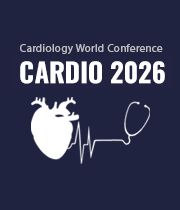Title : Optimizing cardiac safety in contemporary procedures: A multimodal framework for risk stratification, surveillance, and intervention
Abstract:
Background: Cardiac complications remain a major source of perioperative morbidity and long-term dysfunction across modern cardiothoracic and interventional procedures. Despite advances in imaging, anaesthesia, and device technology, procedural cardiac risk is amplified by patient comorbidities, anatomical complexity, and inconsistent surveillance strategies. A unified framework for risk stratification and early detection is urgently needed to improve outcomes.
Aims & Objectives: To develop a pragmatic, evidence-informed framework that: (1) stratifies procedural cardiac risk using baseline and intraoperative factors; (2) defines a multimodal surveillance algorithm for early detection of myocardial injury and dysfunction; and (3) proposes actionable thresholds for intervention to reduce cardiac morbidity and optimize recovery.
Methods: We synthesized findings from recent literature on cardiothoracic surgery, interventional cardiology, and cardiac imaging. Key domains included procedural risk factors (e.g., bypass time, reoperation status), biomarker surveillance (troponin, NT-proBNP), and imaging modalities (echocardiography, global longitudinal strain). We integrated these into a tiered risk model and timeline-based surveillance protocol adaptable to both high-resource and resource-limited settings.
Results: Our framework stratifies patients into low, intermediate, and high cardiac risk based on age, LVEF, renal function, frailty, and procedural complexity. Recommended surveillance includes baseline ECG and echocardiography with GLS, followed by serial troponin and GLS monitoring post-procedure. Intervention thresholds include: (1) troponin rise above institutional upper limit, (2) GLS decline ≥12–15%, and (3) new symptomatic LVEF drop ≥10% to
Conclusion: A structured, multimodal cardiac safety framework improves early detection and management of procedural cardiac risk. By combining biomarker and imaging surveillance with risk-tailored interventions, clinicians can reduce cardiac morbidity and enhance procedural outcomes. Future research should validate this model prospectively and explore its scalability across diverse healthcare settings.
Keywords: Cardiac risk stratification; global longitudinal strain; troponin; perioperative surveillance; heart failure prevention; procedural cardiology; multimodal monitoring



